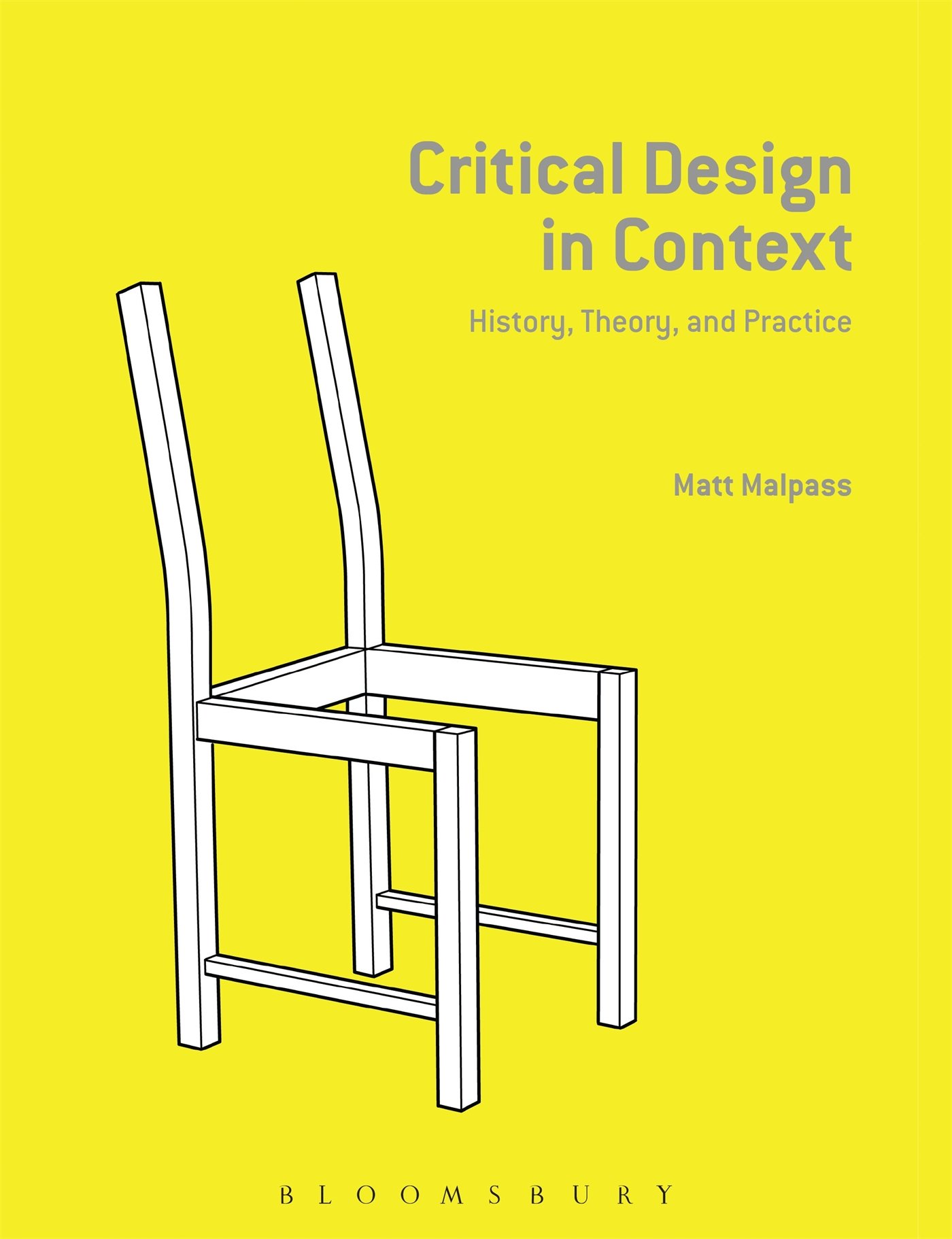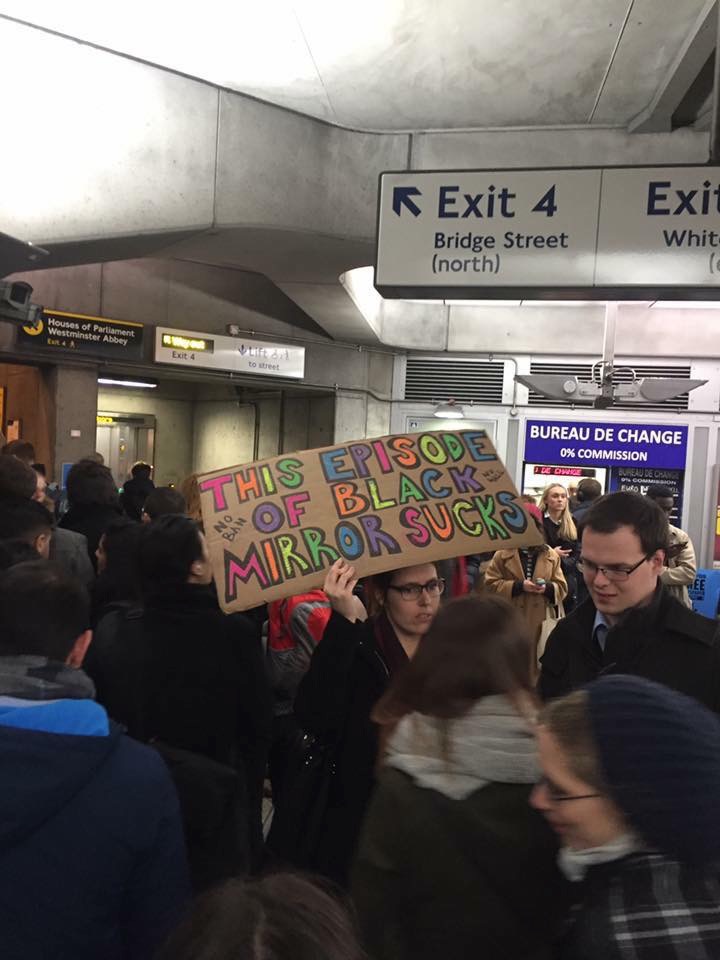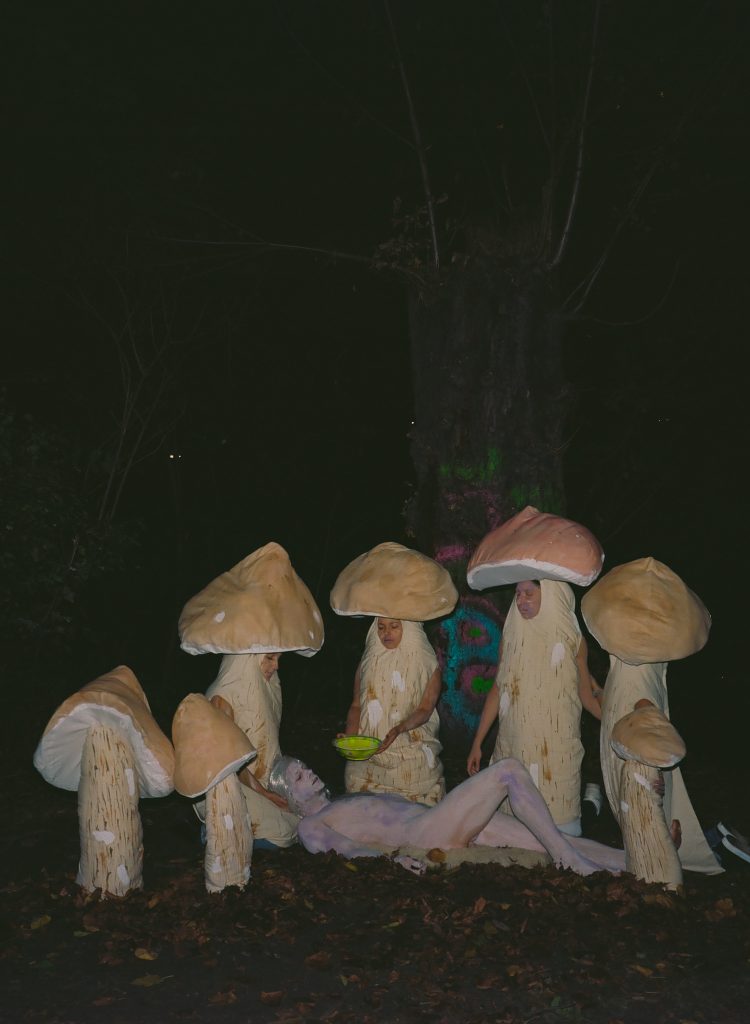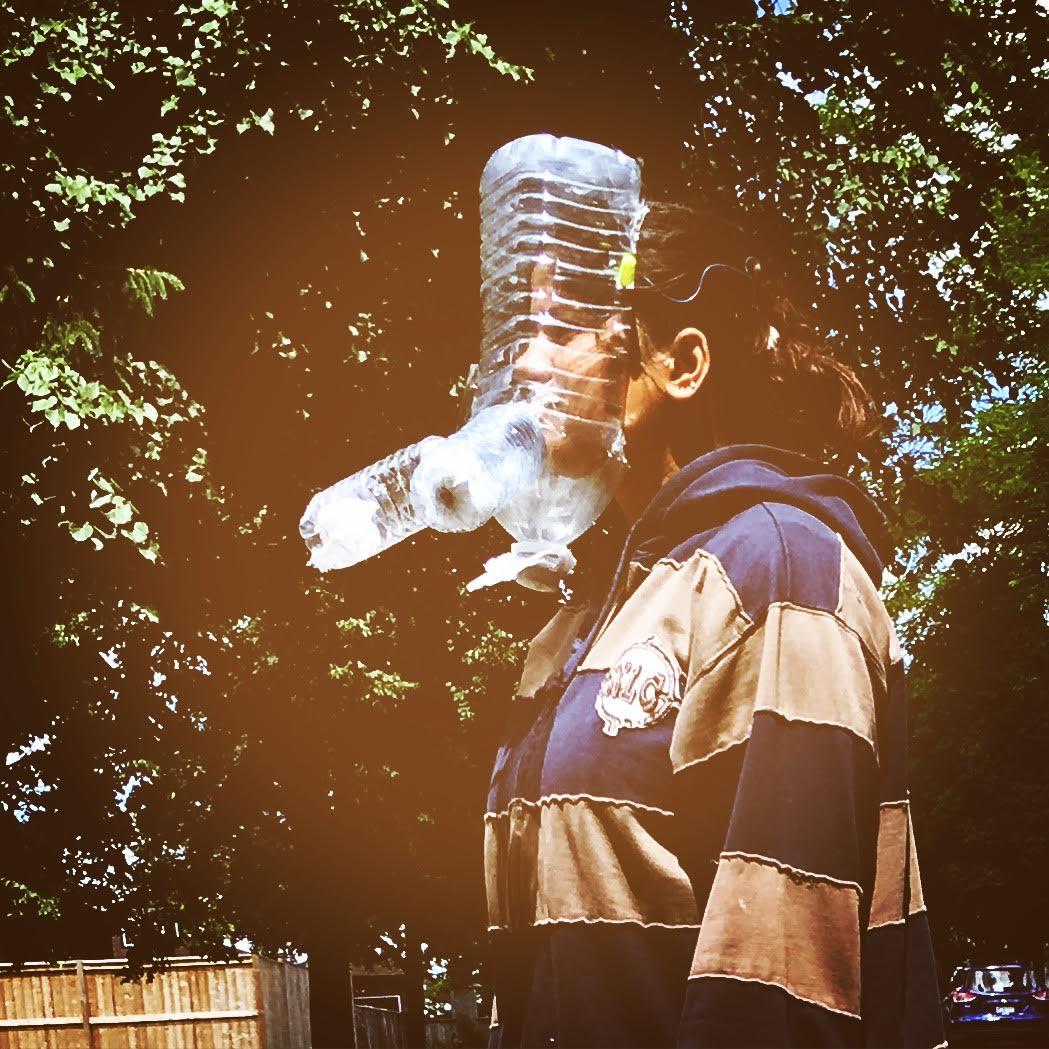Originally worked out for the online lecture series by Tom Bieling, Torben Körschkes & Petja Ivanova (in order of appearance). Therefore the I‘s used may represent different persona. All speakers are not native speakers.
Hi everyone, Greetings from Hamburg and Berlin.
+
We’re very excited to kick-off with you tonight Season 2 of our lecture series “Potentials of Speculation”. Before we start, we would like you to know, that this session – like all the others – is being recorded.
+
Nice to see some familiar names and faces popping up in the gallery. And also nice to see some new ones as well.
+
My name is Tom Bieling, and together with Torben Körschkes, I am going to give a you a short overview about the upcoming lectures that will take place in this series. A series, which we prepared together with our colleague Petja Ivanova, who can’t be here tonight, but she’ll be back again, next time.
+
Before Torben will give you some background about our project, we would like to share with you a short retrospect on what has happened last semester, in the first season of our lecture series. The trailer was edited by Christine Rafflenbeul.
For those of you who are completly new to thinking with the term speculation, I will try to give a short example: In the comic book “Bruchlinien. Drei Episoden zum NSU” the author Anne König tried to narrate some of the shocking gaps that the trial around the german right-wing terrorist group called “National Socialist Underground” left open. In one part she speculated on how a certain conversation might have taken place. Then the lawyer of one of the victims relatives read the made up part, called Anne and said: “Who told you this? This is bullshit. Let me tell you what really happened.” +
For those of you who are completly new to thinking with the term speculation, I will try to give a short example: In the comic book “Bruchlinien. Drei Episoden zum NSU” the author Anne König tried to narrate some of the shocking gaps that the trial around the german right-wing terrorist group called “National Socialist Underground” left open. In one part she speculated on how a certain conversation might have taken place. Then the lawyer of one of the victims relatives read the made up part, called Anne and said: “Who told you this? This is bullshit. Let me tell you what really happened.” +
This is an example I find kind of fascinating in our context because here speculation worked as a provocative tool to reveal a truth, that a 5 year long legal process could not bring to light.
+
But of course this is only one example for the potential of speculation. Within this second part of the series we will also ask: What does speculation mean in feminist practices? What role does speculation play in the writing of history? On what basis can we speculate about worlds to be built?
+
And with this I will pass over to Tom who will begin to introduce our guests.
+
Thank you, Torben. On april 20, Matt Malpass will join us for the first lecture. Matt Malpass is a designer and theorist based in London. He is a Reader in Critical Design Practice at UAL: Central Saint Martins where he directs the MA Industrial Design Programme. He is author of the book "Critical Design in Context”.
+
In his talk: PLAYING FOOLS AND ENGAGING IDIOTS: THE FUNCTION OF SPECULATIVE CRITICAL DESIGN he will focus on Speculative Critical Design (that) moves away from traditional approaches that limit design’s role to the production of profitable objects, focusing instead on a practice that is interrogative, discursive and experimental. This talk will offer an introduction to the practice and question how a form of design that is focused on asking questions might function to provide answers in an age of political uncertainty, austerity and ecological crisis.
+
On the 4th of May, Julia Grillmayer will join us for a lecture on "(Eco-)feminist Fabulations for more capacious futures"
+
Julia Grillmayr is a Vienna- and Linz-based cultural studies scholar, journalist, radio maker and science communicator. She holds a PhD in Comparative Literature from the University of Vienna and is currently working on her first Post Doc project „Science Fiction, Fact & Forecast“ at the University of Art and Design Linz. The rest of the time, as she spends in muddy danubian wetlands and in tap shoes.
+
When we think about ‘speculation as a tool‘, what often comes to mind are futurists who write, compare and interpret scenarios. In the world of business, politics or the military, these scenarios are often pared with probability calculations and statistics. In the context of education and community organization, these scenarios can take a more informal and creative form. With increasing frequency, Speculative Literature, especially Science Fiction (SF), is similarly presented ‘as a tool’ to think about possible futures. The genre is discussed as the “realism of our time” (Kim Stanley Robinson) and as “a tool for thinking about and intervening in the world” (Sherryl Vint).
+
In her lecture, Julia Grillmayr will outline the current trend of Science-fictional scenario thinking and conversely, how a certain futurological aspiration also structures the field of contemporary Speculative Literature.
+
As a cultural studies scholar and SF fan whose research is focused on the question of ‘what speculation can do’, but who is also wary of a simple instrumentalization of fiction and the omnipresence of ‘tool’ thinking, Julia Grillmayr proposes to look at the contemporary scenario projects and SF literature from the perspective of (eco)feminist fabulation. Since its beginning in the 1970s, ecofeminism has claimed storytelling as a form of theory and conceptual thinking. Seen through the lens of this tradition, instead of taking the scenario methods of cold war cybernetics as a starting point, a different understanding of these current forms of speculative writing comes to the fore. Speculation, here, means first and foremost to create “more capacious epistemologies” (Stacy Alaimo), in order to find “ways to create a world other than the one we’re in while keeping our feet in the mud” (Alexis Shotwell with a wink at Donna Haraway), or, as aptly summarized by Maria Puig de la Bellacasa: “Reconnecting a politics of commitment and of ethical obligation with an ontology of more-than-human-worlds without falling back into classic humanist categories of thought requires a speculative effort.”
+
Patricia Reed is a Canadian artist and writer based in Berlin. She will join us on May 18. Because she does a lot of things I will focus on why we picked her and what aspects of her work were important for me in the past.
+
In any way you can check out her website https://aestheticmanagement.com/. Patricia also regularly publishes on e-flux, the fantastic online platform for artistic and architectural discourse, so you can find some of her writings there.
+
I first came across her through the postscript she wrote for Markus Miessen’s book „Crossbenching“, published in english by Sternberg Press and in german by Merve in 2016. In her text entitled „Constructing Assemblies for Alienation“ Patricia formulates an idea of „models“ that I find very interesting and enriching for the design discourse in general but also in respect to „world building“ and speculative design. She proposes to think of models not as tools to break down the complexity of the world, to make it graspable or perceptible, but to formulate models to approach complexity in new and unthought ways. Models as tools to approach the world differently, as tools for the construction and distribution of new, and alternative concepts of living together.
+
Within this series Patricia will hold a talk entitled: „On Nonadaptation and Realizability“. She proposes to think about speculation as a nonadaption to frames that guide our thinking and acting. She asks for the connection or non-connection between what we know and what we speculate about and how we can distinguish between „trivial and consequential forms of speculation“. I quote: “We will look at the productive friction between possibility and actuality through the premise of realizable possibility, as a way to introduce a mode of practical concreteness to speculation.“
+
This is an example of one of the diagrams that have become part of Patricia‘s artistic and theoretical work and I am very excited about what she‘ll tell us about these diagrams and working with and through them:
+
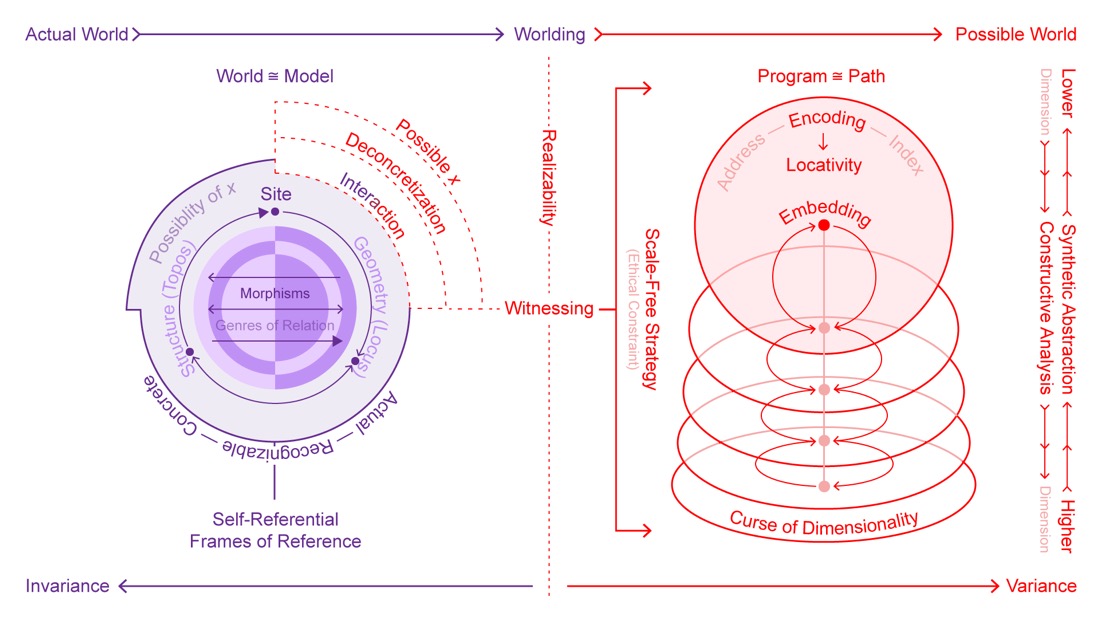
Mariam Ghani is a an artist, writer, and filmmaker and will join us on June 15. A lot of her projects engange with places, issues, ideas or institutions over a long period of time and she often works in collaborations and looks at places and moments where social, political, and cultural structures take on visible forms.
+
Her work has been shown all over the world and in some of the most renowned institutions, but again, all this you can look up on her website: https://www.mariamghani.com/. For now I will tell you what her talk within this series will be about, which is entitled „Speculative Histories“.
+
Speculative fiction is a litarary genre where observable present phenomena are extrapolated into the future. Mariam will talk about this same approach but kind of backwards: observing a place, space, event in the present and extrapolating it backwards, to imagine how it came to be.
+
This process is not only about looking at the official statements and records, but also at the rumors and myths that haunt those narratives. Speculative histories in that sense is a way to discover what might have been forgotten or what should have happened and did not, e.g. because it was oppressed.
+
Several of Mariam’s works revolve around this approach and the connected questions of the political uses of rewriting the past from the present. She will talk about her works but also about the connection of speculative histories to material histories and other concepts such as the artist as archivist or the artist as anthropologist.
+
Mariam will also consider how the practice of speculative history-writing appears in our current 'post-fact' moment, which might already lead to interesting thoughts and arguments.
+
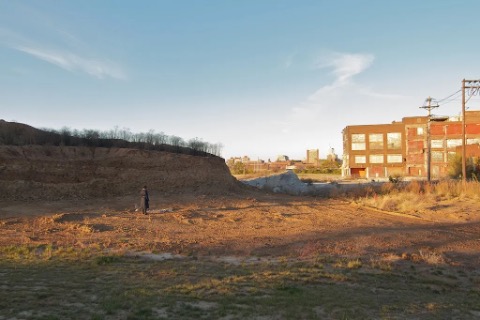
30 X 45 INCHES, 2015 (EDITION OF 5)
This is a still from her video work „The City and the City“ from 2015 where a conceptual framework of the sci-fi novel with the same name is mapped onto and performed within the city of St. Louis. The original novel by China Miéville and the movie by Ghani are about two cities that are geographcially intertwined but politically and economically divided. Both are about living in this condition where the citizens of one city learn to ignore the citizens of the other city and, subsequently, everything that is „other“.
+
If you‘re already interested in her work you should check out her website because she writes in length about some of her projects – not all – which is somehow unusual but shows nicely how important the conteptual framework and context is within her work.
+
On June 29, our last speaker will be Deepa Butoliya, who is Assistant Professor at Stamps School of Art & Design. Her research is located at the intersection of models of knowledge and critical thinking emerging from multiple and global perspectives. Over the past few years she has focused on critical perspectives and practices in design. She researches critique in design from multiple pluriversal perspectives. For instance by exploring critical design practices from the global south, which involves exploring the criticality embedded in the ubiquitous and very human practice of Jugaad which is a hindi term for make-do situated under severe constraints.
+
Critical Jugaad is a term that is based on an inquiry that explains how people use ingenious making practices like jugaad as a tool for resistance, subversion and criticality against colonial powers of oppression. Jugaad is a Hindi term which means making do with what you have at hand. Jugaad-like practices form cultural binders and empower people to find a collective force to fight oppression while practicing creative self-expression. So, from that perspective, Critical jugaad is done as an act of everyday resistance and survival.
+
“Critical Jugaad as a practice is a nonviolent critique that provokes and questions the techno-utopian imaginaries in futures discourse. Criticality is manifested through critique and criticism of the social, cultural, economic and political issues engulfing a nation, through ingenious sociomaterial practices” (Butoliya 2020).
+
Deepa Butoliya’s inquiry is about “tapping into the potential of such sociomaterial practices and the epistemology of the critical practices that happen outside the preconceived assumptions of criticality. The design community has been obsessed with critical practices manifested through design, especially over the last decade, as expert driven and intellectual designerly practices. However, being critical about the functioning of state and industry is not bound by a niche design practice but a democratic right of every individual. The design community needs to come to terms with critical making and design as practiced by marginalised communities, which is far more effective in its critique and intended social change than most critical practices claim to be” (ibid).
+
So that was just a short overview about what will happen this season. We hope you have got a little foretaste of what you can expect in the coming months. The series will possibly continue next semester (and beyond). The schedule for this semester can be found on our website speclog.xyz
+
The talks are always at 6 pm / Hamburg time (CEST), the Zoom Link applies to all events in this series this semester, course language will be English, duration of a lecture will be approximately 40 min + discussion.
+
Please feel free to be actively involved in the discussions, too! Please don’t hesitate to let us know if you have any questions or suggestions, at any point. And spread the word! This is an open format, so you might wanna tell your friends, colleagues or students. They are more than welcome to join us at our next lectures.
+
Thank you + bye bye.
+

